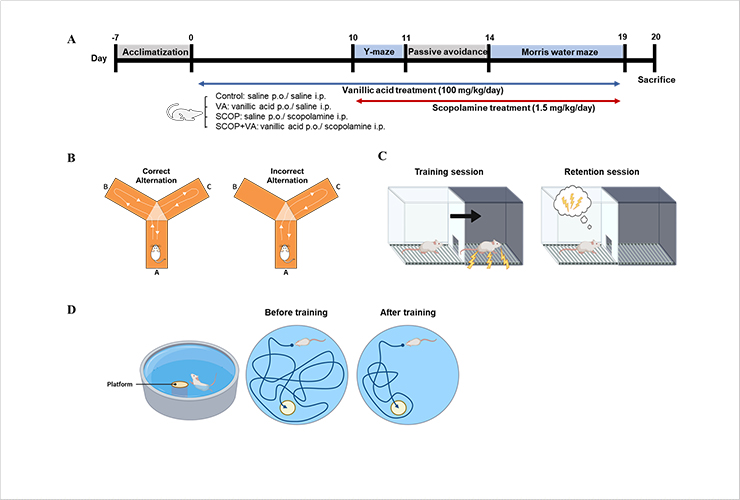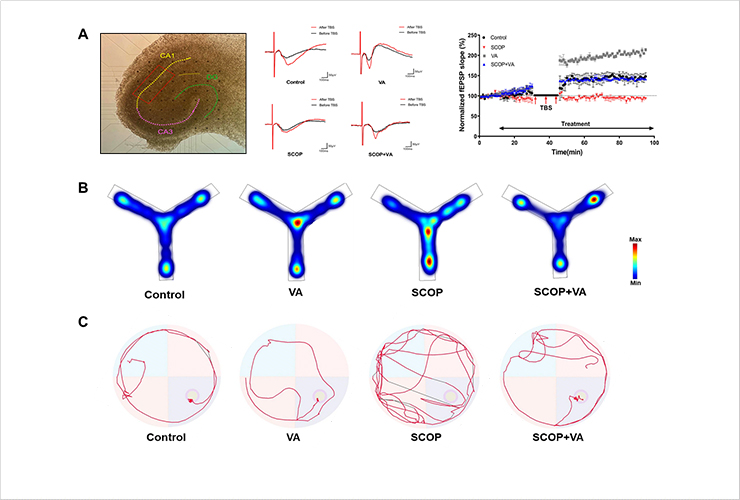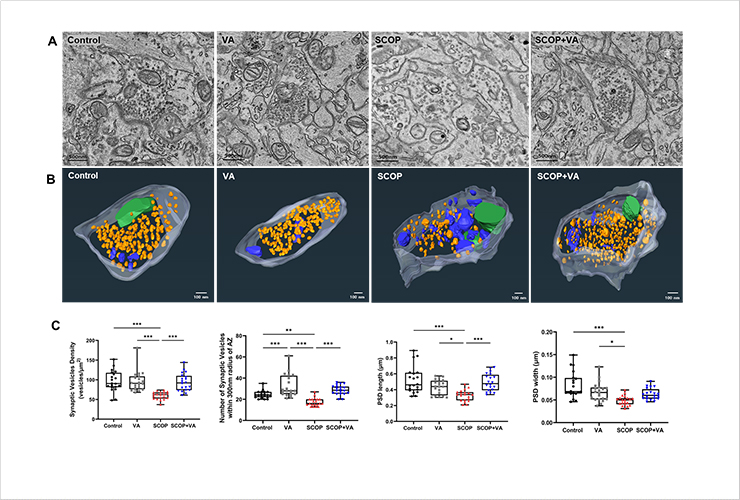Representative Research Publications
The therapeutic effects of naturally occurring vanillic acid on dementia-related learning and memory 2024 > Representative Research Publications > Research Results Home
The therapeutic effects of naturally occurring vanillic acid on dementia-related learning and memory impairment
- Biomed. Pharmacother. / 2024. 8.
- Ga-Young Choi (First author), Ji-Ho Park, Hee-Seok Kweon(Corresponding author)
Research Summary
Alzheimer’s disease (AD) is a progressive neurodegenerative disorder characterized by cognitive decline, synaptic dysfunction, and memory impairment. Scopolamine (SCOP), a muscarinic acetylcholine receptor antagonist, is widely used to induce AD-like cognitive deficits in experimental models. This study investigated the potential neuroprotective effects of vanillic acid (VA), a natural phenolic compound, on SCOP-induced learning and memory impairments in rats.
To evaluate the effects of VA on cognitive function, behavioral experiments such as the Y-maze, passive avoidance (PA), and Morris water maze (MWM) tests were conducted. The biochemical and molecular mechanisms underlying VA’s neuroprotective properties were further explored by assessing acetylcholinesterase (AChE) activity, oxidative stress markers (SOD, CAT, MDA), and the hippocampal BDNF/TrkB/ERK/CREB signaling pathway.
Related Figures
 Fig. 1 Timeline of in vivo experiment and methods of behavioral tests
Fig. 1 Timeline of in vivo experiment and methods of behavioral tests
Additionally, electrophysiological analysis of long-term potentiation (LTP) was performed to examine synaptic plasticity. Bio-HVEM (high voltage electron microscopy) was utilized to analyze synaptic vesicle density and ultrastructural changes in the hippocampus, providing critical insights into the neuroprotective effects of VA at the cellular level.
The results demonstrated that VA significantly improved learning and memory deficits induced by SCOP administration. Electrophysiological recordings confirmed that VA restored LTP impairment, indicating improved synaptic connectivity. Ultrastructural analysis using electron microscopy
[Fig. 2] Results of ex vivo and behavioral experiments
further revealed an increase in synaptic vesicle density and improvements in postsynaptic structure, supporting the hypothesis that VA enhances synaptic integrity and function.
 Fig. 2 Results of ex vivo and behavioral experiments
Fig. 2 Results of ex vivo and behavioral experiments
This research highlights the potential therapeutic benefits of VA in AD by targeting cholinergic dysfunction, reducing oxidative stress, and enhancing synaptic plasticity. These findings suggest that VA may serve as a promising candidate for AD treatment. Future research should focus on the molecular interactions of VA with NMDA and AMPA receptors to further elucidate its role in synaptic regulation and cognitive enhancement.
 Fig. 3 Analysis of synaptic vesicle density on synaptic ultrastructure
Fig. 3 Analysis of synaptic vesicle density on synaptic ultrastructure



